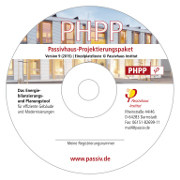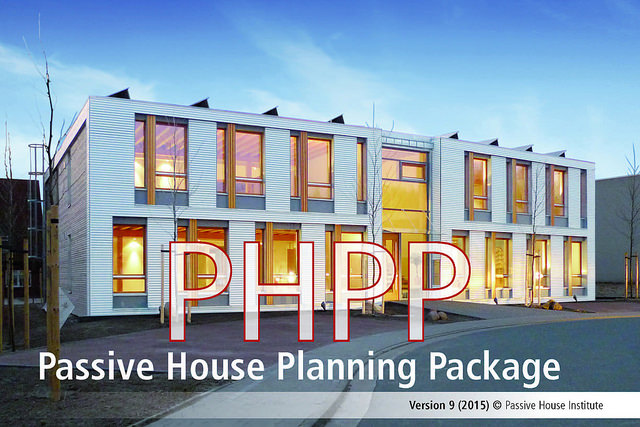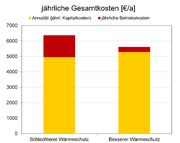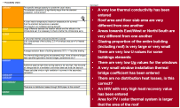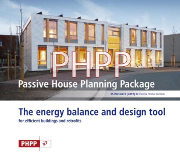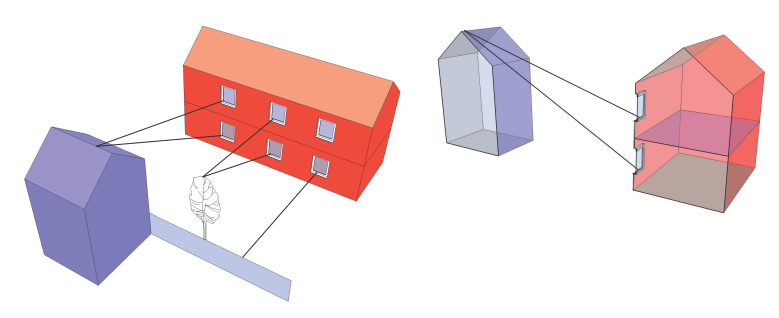- User Tools
- Site Tools
- Sidebar
- Passive House — 6 reasons why you still need opening windows
- . do I need to keep the windows closed at all times?
- Passive house open windows
- PHPP 9 news – EnerPHit Retrofit Plan | IP-PHPP 9 with variant calculations
- Planning Passive House buildings and NZEBs – made easy with the PHPP
- The advantages of the Passive House Planning Package
- System requirements and license type
- PHPP 9 – Latest version with many new applications
- Passive House Planning Package – a tried and tested planning tool
- IP-PHPP 9 – in imperial unit system
- designPH – 3D data entry tool for the Passive House Planning Package
- designPH & PHPP EDU – 3D energy efficiency planning tool for students and educational institutions
- PHPP and PHPP & designPH workshops
- Order PHPP and designPH online
- Examples:
User Tools
Site Tools
Sidebar
Brought to you by
Supported by
Passive House — 6 reasons why you still need opening windows
. do I need to keep the windows closed at all times?
Wrong – Absolutely not! There are multiple reasons why there needs to be at least one opening window in each room typically used for living (bedrooms, living room, kitchen). The best option is a turn and tilt fitting. At least this is true for all places on the planet, there external conditions are at least sometimes near to a comfortable range (well, and as long as you are not building on Mars, there are only a few exceptions). Saving costs on windows is a bad idea and might cause several problems later on:
1. During warm periods, opening your windows is the easiest, cheapest, most effective and environmentally friendly way of cooling your building, with cross ventilation offering the most effective solution; at least in climates, in which the external temperatures cool down during the night. The standard air exchange provided by Passive House ventilation systems generally is far lower, and with the fan giving off additional heat, the cooling effect is reduced even more. The air change rates of ventilation systems are typically laid out for really cold (or hot) periods and may not be too high to keep the air from getting too dry (or too humid). A completely different type of ventilation system would be needed to allow for significantly higher air change rates. Such systems would be more expensive and less efficient; of course, in some circumstances such systems can provide another solution. Providing large volumes of air by opening your windows, on the other hand, is fairly inexpensive.
2. Users typically expect to have openable windows anyway as they offer maximum flexibility. Most users would not want to miss windows as a “connection to the outside world”, and want to be able to choose whether to keep the windows open or closed. Eliminating this option might cause discontent amongst users whose wishes should be respected – unless it would be unreasonable to do so (for example in a submarine or a spaceship).
3. Cleaning fixed glazing is usually much more difficult than cleaning windows that can be opened and cleaned from the inside. Openable windows thus make a building much easier to maintain and can help reduce running costs.
4. Monitoring results suggest that there is little risk of Passive Houses not getting warm or requiring significantly more energy for heating due to users keeping the windows open. There is no need to fear that « human errors » might cause problems, even when bedroom windows are tilted all night long during winter. In this case, the only negative effect is a slight increase in heating energy (see article on user behaviour).
5. Even during cold periods, sometimes it may be nice to be able to open the windows to let in some fresh air, for example during a party or an assembly.
6. Last but not least, an openable window could save one’s life as it offers an easy way out in the unfortunate event of an emergency.
There are few Passive House buildings partially or entirely fitted with fixed glazing. Most reports or enquiries regarding these building concern complaints about excessive temperatures in summer or users feeling closed in – something that can be prevented with a turn and tilt fitting.
Passive house open windows
The PHPP is an easy to use planning tool for energy efficiency for the use of architects and planning experts. The reliability of the calculation results and ease of use of this planning tool has already been experienced by several thousand users.
PHPP 9 news – EnerPHit Retrofit Plan | IP-PHPP 9 with variant calculations
PHPP – ASHRAE validation
In January 2019, the Passive House Planning Package (PHPP) version 9.6 was evaluated using the ANSI/ASHRAE Standard 140, a comparative testing method for building energy programs. The testing method compared the results of the PHPP with those of three other reference tools by simulating 38 test cases, 21 for heating and 17 for cooling. The test results generally agreed very well with those of the reference software and the acceptance range suggested by the testing method and confirmed the validity of PHPP testing results.
Find a short abstract here ( 
Now available: output file EnerPHit Retrofit Plan and criteria for pre-certification of step-by-step retrofits
A separate output-file for step-by-step retrofits was added to PHPP 9. Linked to PHPP, this EnerPHit Retrofit Plan enables the user to present component qualities and efficiency results of single retrofit steps. Furthermore, a scheduler, and additional descriptions or connection details complete the comprehensive presentation of the retrofit process.
An additional section to the EnerPHit criteria also enables quality assurance of the step-by-step retrofit processes through pre-certification during the first retrofit step.
EnerPHit Retrofit Plan (ERP) available for IP-PHPP 9
An update of the IP-version of PHPP was released. The IP-version 9.7 now also contains the EnerPHit Retrofit Plan in imperial units. Step-by-step retrofits can now be pre-certified in IP-units. A new version of the Passive House Building Criteria with IP units is now available.
Planning Passive House buildings and NZEBs – made easy with the PHPP
The tried and tested Passive House Planning Package provides reliable results for the following:
|
|
System requirements and license type
The PHPP is based on a MS Excel workbook in the xlsx/xlsm format. Microsoft Windows XP (or higher) and Microsoft Excel 2007 (or higher) are system requirements. On Macintosh, PHPP works with Excel for Mac 2011 (or higher). As far as the authors are aware, the PHPP can also be used with current versions of OpenOffice or LibreOffice. However, depending on the platforms used and their programming, there may be limited functionality of the calculation tool or the implemented macro tools.
PHPP is only provided as single-user license, including a detailed manual. With the license the PHPP user obtains a registration code which is used to register the PHPP license. Based on this registration, the user will receive updates of the calculation tool, or upgrade discounts for new versions of PHPP or designPH.
PHPP 9 – Latest version with many new applications
Verification in accordance with the international EnerPHit criteria for modernisation of buildings
| The PHPP 9 enables input of efficiency parameters for different variants into a single PHPP file. The results for the variants are entered sorted in columns and are calculated in parallel so that the effects of these parameters can be compared easily. |
| In this way, different steps of a refurbishment can also be input into a single PHPP file. This makes it possible to depict the improvement in efficiency resulting from each individual refurbishment step and to enter and assess projects with a long-term strategy in a convenient manner. |
| The message function for incorrect or missing data input has been systematically reviewed. All messages have now been compiled in a new worksheet prepared for this purpose. In this way users can receive clear information regarding the places where incorrect, or incomplete or implausible data has been entered and needs rechecking or reviewing. |
| The input options for calculation of distribution losses of heating or hot water pipes have been extended considerably. Besides the possibility of entering several pipe systems, it is now also possible to take into account heat recovery systems for shower water. The hot water demand can alternatively be assessed in detail in order to ascertain further potentials for saving energy for example based on the use of flow-optimised fittings. |
| The new Passive House categories (Classic, Plus, Premium) allow evaluation of building efficiency taking into account the interplay of energy efficiency and renewable energy generation. As an alternative, classical verification of the Passive House Standard will continue to be offered for buildings with a heating demand of 15 kWh/(m²a) and a primary energy demand of 120 kWh/(m²a), without any renewable energy generators additionally – this corresponds with the category Passive House Classic according to the new PER factor method.. |
|
The latest version designPH 1.1 does not just ensure compatibility with PHPP 9; one of the new features includes automatic identification and calculation of the shading parameters even during the analysis with the 3D tool, therefore optimisation of a building’s shading parameters is already possible in SketchUP.
.
designPH & PHPP EDU – 3D energy efficiency planning tool for students and educational institutions
designPH EDU was developed specifically with students and universities in mind and in comparison with the full version, its features are only slightly limited. designPH EDU consists of a bundle of PHPP 8 (2013) and the SketchUp plugin designPH. The online manual and instructions for designPH, including user forums and FAQs are available on www.designph.org.
Order designPH-EDU
designPH EDU license holders will receive an upgrade discount when purchasing PHPP 9 (2015)
PHPP and PHPP & designPH workshops
Order PHPP and designPH online
iPHA members receive a discount on both PHPP and designPH.
Further iInformation:
PHPP 9 – Foreword ( 
PHPP 9 – What is new ( 
PHPP 9 – Input sequence ( 
Examples:
Passive House Expert Courses

e-learning
iPHA Webinar | Project Spotlight: Educational buildings in the UK
10 March 2021 | 6:00 PM

10 — 11 September 2021 in Wuppertal, Germany and online


25 — 27 June 2021, worldwide
5 — 7 Nov 2021, worldwide

| Component Database |

Component Database
read more
| Projects |
| New developments |
designPH
read more
PHPP 9 (2015)
read more
Seals for Certified Passive House Components
read more
Passive House Classes,
Classic, Plus, Premium
read more
EnerPHit —
PHI certification for retrofits
read more

for certified Passive Houses
read more
| Press releases |
| Research & Literature |

more

EnerPHit Planner Handbook
(in German)
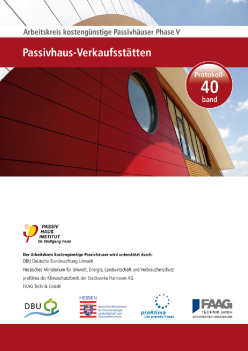
Overview of contents
(in German)
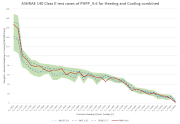

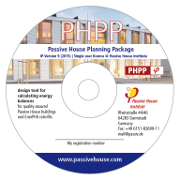
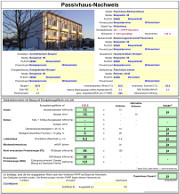 .
.